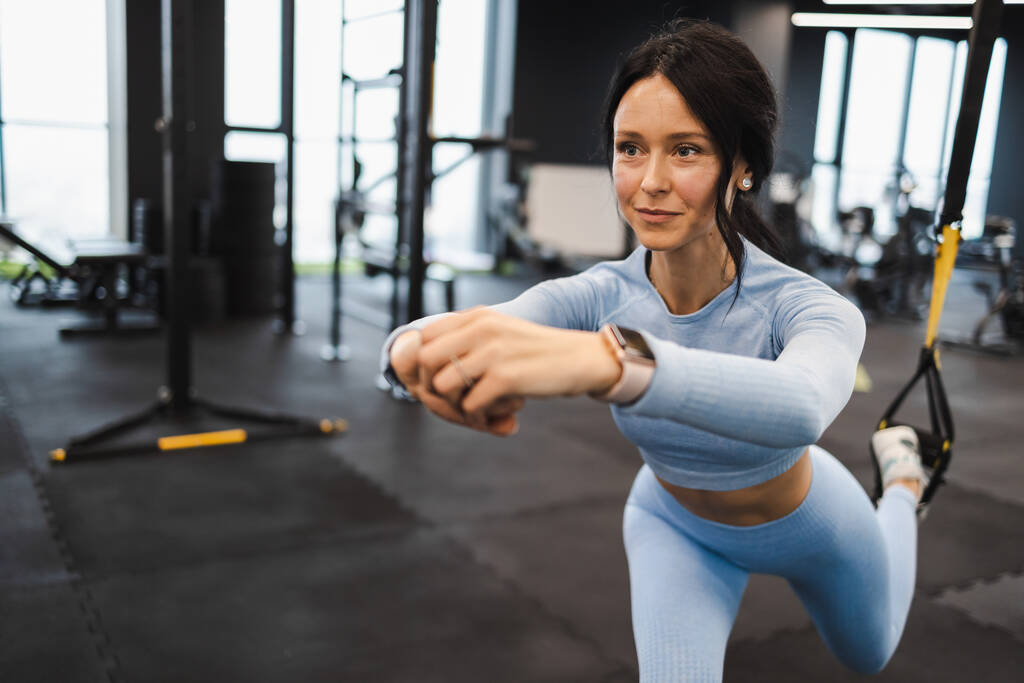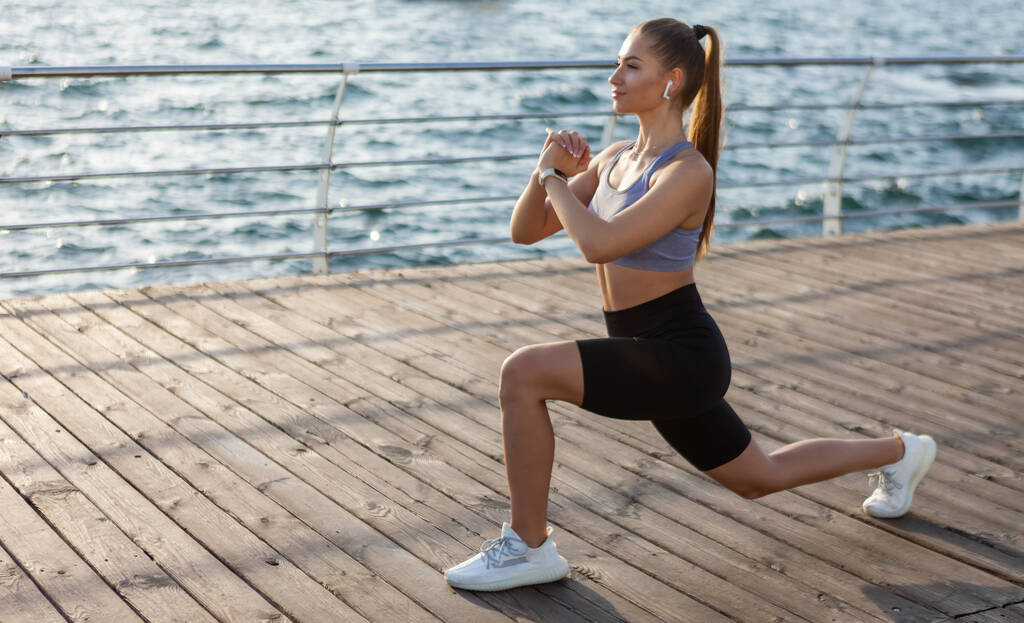Revolutionize Your Fitness Routine with These 7 Essential Functional Movement Exercises
September 18, 2023

Are you tired of the same old boring fitness routines? Do you want to take your workouts to the next level? Well, look no further because we have the solution for you. In this article, we will introduce you to the world of functional movement exercises and show you how they can revolutionize your fitness routine. Whether you're a beginner or a seasoned fitness enthusiast, these 7 essential exercises will unlock a whole new level of strength, stability, and mobility. So, get ready to have fun, challenge your body, and transform your workouts!

Traditional Fitness Methods Reimagined
Before we dive into the world of functional movement exercises, let's take a moment to explore alternative approaches to fitness. Traditional methods like weightlifting and cardio machines have their benefits, but they often neglect the natural movements our bodies are designed to perform. Functional movement exercises, on the other hand, focus on movements that mimic real-life activities. By incorporating these exercises into your routine, you'll improve your overall fitness and enhance your performance in everyday tasks.
Exploring Alternative Approaches to Fitness
Let's face it, traditional fitness methods can sometimes be a bit, well, boring. But fear not, because there are plenty of exciting alternatives out there! From dance workouts to obstacle course training, there's a fitness trend for everyone. So, why not mix things up and try something new? You never know, you might just find your new favorite way to break a sweat!
The Power of Functional Movement Exercises
Functional movement exercises are not only fun but also incredibly effective. They target multiple muscle groups, improve coordination, and boost overall athletic performance. Whether you're swinging a kettlebell or performing a squat, these exercises will challenge your body in ways you've never experienced before. So, get ready to unleash your inner athlete and discover the power of functional movement!
Mastering the Fundamentals of Functional Movement
Now that we've covered the basics, it's time to dive into the fundamental functional movement exercises that will take your fitness routine to new heights. These exercises are the building blocks of functional movement and will help you develop strength, stability, and mobility like never before.
Functional movement exercises are designed to mimic real-life movements and improve your ability to perform everyday tasks with ease. By incorporating these exercises into your fitness routine, you'll not only enhance your physical performance but also reduce the risk of injury and improve your overall quality of life.
Level Up Your Workout with Lunges
Lunges are a staple in any functional movement routine. They target the legs, glutes, and core, while also improving balance and coordination. Whether you choose to do forward lunges, reverse lunges, or lateral lunges, these exercises will challenge your lower body and leave you feeling strong and empowered.
When performing lunges, it's important to maintain proper form to maximize the benefits and prevent injury. Keep your chest up, shoulders back, and core engaged. Take a big step forward or backward, depending on the variation you choose, and lower your body until your front or back knee is at a 90-degree angle. Push through your heel to return to the starting position and repeat on the other side.
Unlocking the Benefits of Hinge Exercises
Hinge exercises, such as deadlifts and kettlebell swings, are essential for building a strong and stable posterior chain. These exercises target the muscles in your back, hips, and hamstrings, while also improving your posture and reducing the risk of injury. So, grab a kettlebell or a barbell and start hinging your way to better fitness!
When performing hinge exercises, it's crucial to maintain a neutral spine and engage your core throughout the movement. For deadlifts, start with your feet hip-width apart and the barbell or kettlebell in front of you. Hinge at the hips, keeping your back straight, and grab the weight with an overhand grip. Push through your heels and squeeze your glutes as you stand up, bringing the weight to hip level. Lower the weight back down with control and repeat.
Push Your Limits with Effective Push Exercises
Push exercises, like push-ups and overhead presses, are fantastic for building upper body strength and improving overall pushing power. Whether you're looking to sculpt your chest, shoulders, or triceps, these exercises will give you the results you're after. So, get down on the floor or grab a set of dumbbells and start pushing your way to a stronger, fitter you!
When performing push exercises, it's important to maintain proper form to avoid strain or injury. For push-ups, start in a high plank position with your hands slightly wider than shoulder-width apart. Lower your body until your chest almost touches the floor, keeping your elbows close to your sides. Push through your palms to straighten your arms and return to the starting position. If push-ups are too challenging, you can modify by performing them on your knees or against a wall.
Pull Your Way to Strength and Stability
Pull exercises, such as pull-ups and rows, are great for targeting the muscles in your back, biceps, and forearms. These exercises not only improve your pulling strength but also enhance your posture and prevent imbalances. So, find a pull-up bar or a set of resistance bands and start pulling your way to a more balanced and powerful physique!
When performing pull exercises, it's important to engage your back muscles and avoid relying solely on your arms. For pull-ups, start by hanging from a bar with your palms facing away from you and your hands slightly wider than shoulder-width apart. Pull your body up until your chin clears the bar, then lower yourself back down with control. If pull-ups are too challenging, you can use a resistance band for assistance or perform inverted rows using a suspension trainer or a barbell set at waist height.
Enhance Your Mobility with Rotational Exercises
Rotational exercises, like Russian twists and woodchops, are fantastic for improving mobility and core strength. They target the muscles in your abs, obliques, and lower back, while also improving your overall balance and stability. So, grab a medicine ball or a resistance band and start twisting your way to a more mobile and agile body!
When performing rotational exercises, it's important to engage your core and maintain control throughout the movement. For Russian twists, sit on the floor with your knees bent and feet flat on the ground. Hold a medicine ball or a weight plate in front of your chest and lean back slightly. Twist your torso to the right, bringing the weight across your body, then twist to the left. Repeat the movement, alternating sides with each twist.
Walk Your Way to Better Health
Walking is often underestimated when it comes to fitness, but it's actually an incredibly effective form of exercise. It's low-impact, easy on the joints, and can be done anywhere, anytime. So, put on your walking shoes, step outside, and enjoy the numerous health benefits that walking has to offer. Your body will thank you!
Walking not only helps improve cardiovascular fitness but also strengthens your muscles, improves bone density, and boosts your mood. Aim for at least 30 minutes of brisk walking every day to reap the full benefits. You can also challenge yourself by incorporating hills or intervals into your walks to increase the intensity.

Taking Your Functional Movement Exercises to the Next Level
By now, you should be familiar with the power of functional movement exercises and how they can transform your fitness routine. These exercises, which mimic everyday movements, have been proven to improve strength, flexibility, and overall fitness. But why stop there? Once you've mastered the fundamentals, it's time to kick things up a notch and take your workouts to the next level.
One way to elevate your functional movement exercises is by incorporating more advanced variations. For example, if you've been doing squats, try adding weights or using a stability ball to challenge your balance. This will not only increase the intensity of the exercise but also engage additional muscle groups.
Another way to take your workouts to the next level is by combining functional movement exercises into high-intensity circuit workouts. Circuit training involves performing a series of exercises with little to no rest in between. This not only keeps your heart rate elevated but also helps to build endurance and burn more calories.
When designing your circuit workouts, be sure to include a variety of functional movement exercises that target different muscle groups. For example, you could start with a set of lunges, followed by push-ups, and then finish with a plank. This will ensure that you're working your entire body and getting a well-rounded workout.
Remember, the possibilities are endless when it comes to taking your functional movement exercises to the next level. Don't be afraid to get creative and try new variations or combinations. You can also seek guidance from a fitness professional who can help you design a personalized workout plan that suits your goals and abilities.
So, keep pushing yourself, stay consistent, and get ready to achieve your fitness goals like never before! With these advanced variations and high-intensity circuit workouts, you'll continue to challenge your body and see even greater results.
So there you have it, a comprehensive guide to revolutionizing your fitness routine with these 7 essential functional movement exercises. From mastering the fundamentals to taking your workouts to the next level, you now have all the tools you need to embark on this exciting fitness journey. So, what are you waiting for? It's time to unleash your inner athlete and start transforming your workouts today!

 Back to Blog
Back to Blog